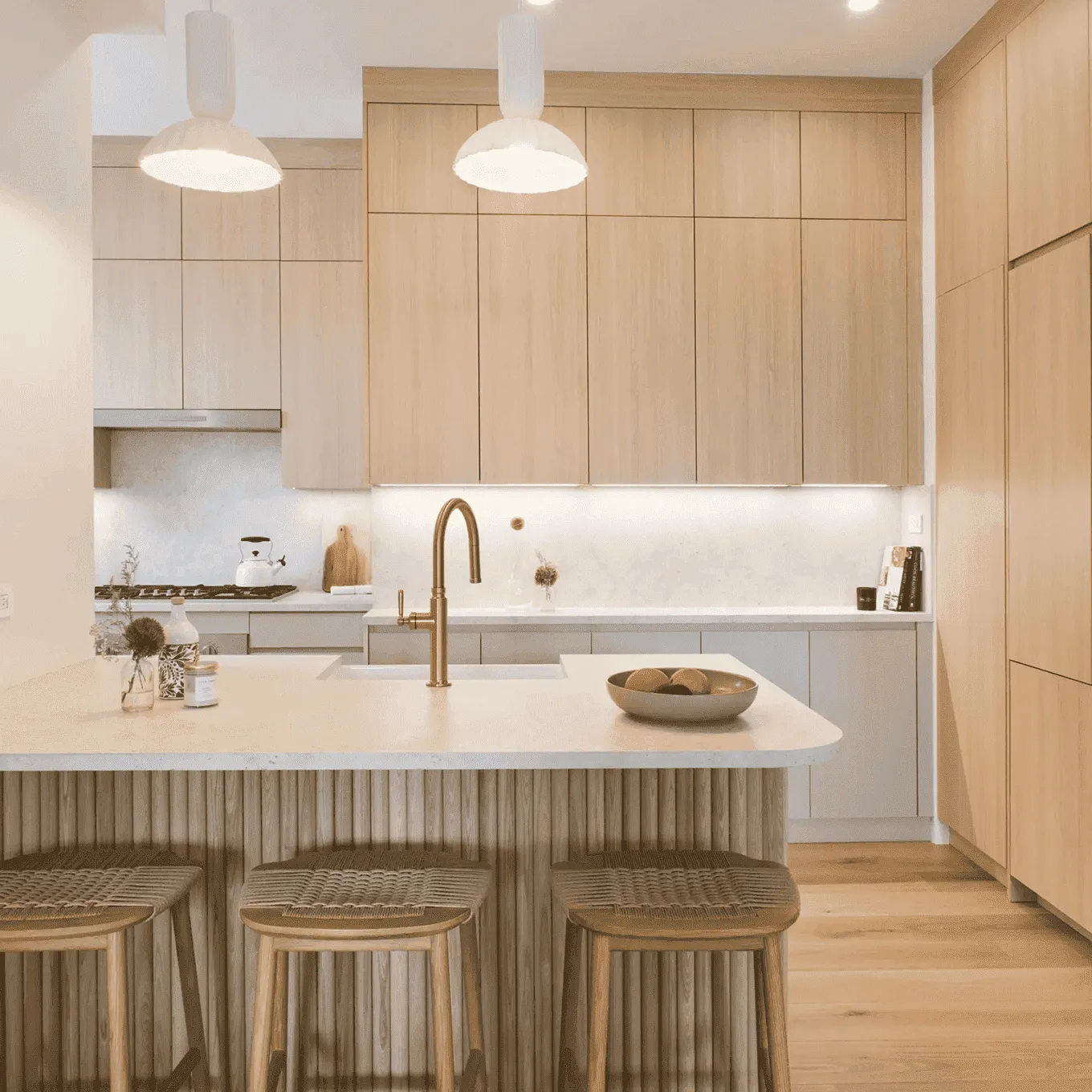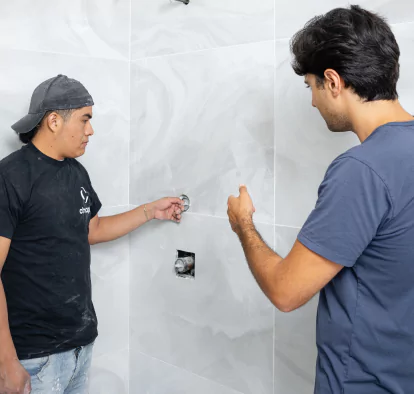Sep 26, 2025 5 min read
New cabinetry tariffs starting October 1: what it means for renovations
On October 1, 2025, new tariffs on imported cabinetry are scheduled to take effect. For homeowners planning kitchen or full-home renovations, the announcement has created uncertainty about how much prices will rise and when the changes will actually hit the market.
At Chapter, we have guided clients through tariff cycles before, and we are here to break down what these changes really mean, and why there is no need to panic.
Key takeaways
- Tariffs begin October 1, 2025 but only apply to new imported cabinetry shipments, not current U.S. inventory.
- Prices won't spike overnight - increases will phase in as distributors cycle through existing stock, typically over 2-3 months.
- Real cost impact is smaller than headlines suggest - historically, a 50% tariff translates to around a 15-25% price increase for homeowners.
- Domestic cabinetry is unaffected - U.S. manufacturers and local millwork shops remain stable options.
- Acting early can save money - starting a renovation now helps secure pre-tariff inventory and predictable pricing
- Chapter clients benefit from U.S. partnerships - ensuring stable pricing, reliable quality, and shorter lead times.

How tariffs impact pricing
The headlines often suggest that a 50 percent tariff automatically means a 50 percent increase for homeowners. In reality, the supply chain adjusts differently:
- Shared costs - Importers, distributors, and retailers all absorb part of the increase to remain competitive. Historically, a 50 percent tariff has translated to closer to a 15–25 percent increase to the end customer, not the full amount.
- Market competition - U.S. distributors and retailers often keep pricing steady for as long as possible to protect market share
- Product mix - Not all categories of cabinetry are equally affected. Some imported lines will rise more sharply than others.
What about inventory already in the U.S.?
Here is an important point: tariffs apply only to goods entering the country after October 1. Anything already in U.S. warehouses or showrooms will not be retroactively taxed.
- Short-term stability - Expect to see pricing remain relatively stable through fall while distributors and dealers sell through existing stock.
- When will stock run out? - Most distributors cycle inventory every 2-3 months. That means by late fall or early winter, new shipments subject to tariffs will start entering the market.
- Planning tip - If you are already considering a kitchen renovation, acting sooner ensures access to pre-tariff stock and better pricing.
Long-term shifts: more domestic manufacturing
When tariffs were last introduced several years ago, many in the industry adapted quickly by expanding U.S.-based production. The same pattern is expected now.
- Cabinetry made in the U.S. - Brands like Wellborn (Alabama), and Starmark (South Dakota) already manufacture domestically and will not be impacted by the October 1 tariffs.
- Custom millwork shops - Local fabricators across the tri-state area provide tailored, high-quality cabinetry options that remain unaffected
- Supply chain resilience - Since COVID, Chapter has partnered with multiple regional cabinetmakers, ensuring we can deliver quality cabinetry without being dependent on imports.
What it means for homeowners
- No immediate shock - Prices will not spike overnight on October 1. Expect gradual adjustments as inventory cycles.
- Some categories affected more than others - Stock and semi-custom imports may rise more, while U.S.-made cabinetry remains stable.
- Opportunity to act early - If you are planning a full kitchen renovation, starting sooner helps secure pre-tariff stock and keeps costs predictable
Chapter’s advantage
At Chapter, we anticipated supply chain disruptions years ago and built partnerships with U.S.-based cabinetry manufacturers. That means:
- Stable Pricing - We can continue offering competitive rates even as tariffs roll out.
- Reliable Quality - Our domestic partners produce cabinetry on par with or better than imported alternatives.
- Shorter Lead Times - Local sourcing reduces delays from overseas logistics.
Final word
Yes, tariffs create turbulence in the market. But they do not have to derail your renovation plans. With strong domestic manufacturing options and Chapter's proven supply chain partnerships, we are ready to deliver beautiful, durable cabinetry at fair prices regardless of October's changes.
If you are considering a full kitchen renovation, it is wise to start now to take advantage of pre-tariff inventory and secure your place in our fall schedule.

FAQs about the October 1 cabinetry tariffs
When do the new cabinetry tariffs take effect?
The new tariffs officially start on October 1, 2025. They apply only to imported cabinetry shipments that arrive in the U.S. after that date. Products already in the country will not be subject to the new tariff.
Will cabinetry prices go up immediately on October 1?
Not necessarily. Most distributors already have stock in warehouses that will not be affected. Prices will likely remain steady until that inventory cycles out, usually within 2-3 months, at which point tariff-adjusted pricing will filter into the market.
How much will cabinetry prices actually increase?
While the tariff rate may sound high, sometimes up to 50 percent, the full cost increase is rarely passed entirely to the customer. Importers, distributors, and retailers usually absorb part of it. Historically, homeowners see closer to 15–25 percent increases, not the full tariff percentage.
Are there cabinetry brands not affected by tariffs?
Yes. Many manufacturers produce cabinets in the U.S. and will not be impacted. Examples include Wellborn (Alabama), and Starmark (South Dakota), as well as custom millwork shops throughout the tri-state area.
Should I move forward with my renovation now or wait?
If you are considering a kitchen renovation in late 2025, it is smart to move sooner. Acting before current inventory sells through helps lock in pre-tariff pricing, while also securing a project start before contractor schedules tighten for winter

